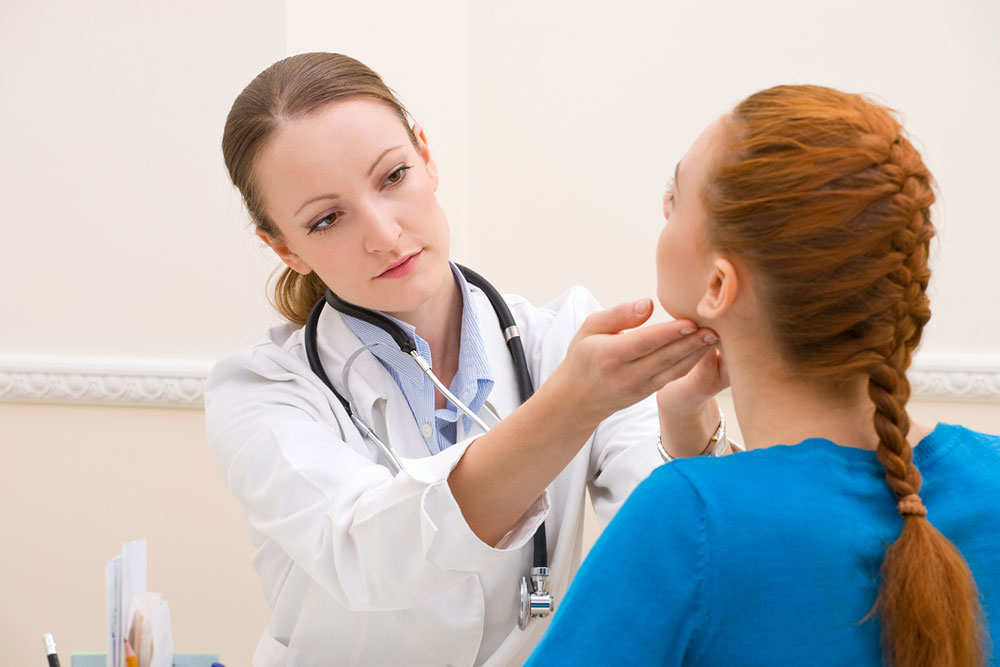
7 silent signs of lymphoma in children
Lymph nodes are integral in the immune system and are present throughout the body. The cancer that starts here is known as lymphoma. Often, it has already spread to other parts of the body by the time it is diagnosed in children and adolescents, making it difficult to treat. That is why it is important to watch for any silent signs of lymphoma in children. Here are some common signs:
1. Enlarged lymph nodes
As lymphoma grows and spreads, it can cause the lymph nodes to expand. These feel like lumps under the skin but do not cause pain. They can often be spotted on the sides of the neck, around the underarms, above the collarbone, or in the groin area.
However, it is important to note that enlarged lymph nodes are generally a result of infections, such as a cold, an ear infection, or a sore throat, and not a direct indicator of lymphoma. These are known as reactive or hyperplastic nodes and tend to be tender to the touch.
2. Low blood cell counts
Lymphoma can also spread inside the bone marrow and crowd the healthy blood cells. This can increase one’s risk of infections (due to a low white blood cell count), may cause easy bruising or bleeding (as a result of dwindling platelet count), and can make the child appear pale and tired (due to a low red blood cell count).
3. Abdominal swelling or pain
If the lymph nodes in the belly are affected, one may experience swelling or pain in the abdomen. This may also be accompanied by fluid buildup in the area, causing more sensitivity.
As this lymphoma spreads, it may press on the spleen and the stomach, leading to loss of appetite or feeling full after a small meal. The lymphoma spreading near the intestines can block bowel function, causing nausea and vomiting. Furthermore, it may block the pathway from the kidneys, leading to a low urine output.
4. Shortness of breath
Lymphoma can also start in lymph nodes in the chest. As it spreads, it begins to press on the windpipe, causing symptoms such as coughing, wheezing, shortness of breath, and trouble breathing.
If the lymphoma begins to press on the superior vena cava (SVC), it can push blood back into the veins. This may lead to symptoms such as swelling in the face, arms, neck, and upper chest, trouble breathing, headaches, dizziness, and a change in consciousness. This is known as the SVC syndrome and is fatal.
5. Formation of lumps or nodules
Lymphomas can also affect the skin, leading to the appearance of itchy red or purple lumps under the skin. Cutaneous T-cell lymphomas may also cause a rash-like redness or raised or scaly patches around the skin. These look similar to other common skin conditions such as eczema and psoriasis.
6. Brain or nerve symptoms
If the lymphoma spreads around the brain or spinal cord, it can impact neuron activity. This can give rise to symptoms such as headaches, nausea, vision changes, dizziness, fits (seizures), facial numbness, and even trouble talking.
7. ‘B’ symptoms
In addition to location-specific symptoms, some fast-growing lymphoma may also cause some generic symptoms such as fatigue, high fever (above 38°C or 100.4℉), itching, chills, loss of appetite, and drenching sweats at night. These are known as ‘B’ symptoms. Doctors use these to understand the stage of lymphoma and the recovery rate.
According to the American Cancer Society, children with a history of Epstein-Barr virus (EBV) are at higher risk of developing Hodgkin’s lymphoma due to changes in the DNA. Other risk factors may also include a family history (among first-degree relatives) of lymphoma, autoimmune conditions such as HIV or autoimmune lymphoproliferative syndrome, a weakened immune system due to an organ transplant, or acquired genetic changes.
How is lymphoma diagnosed in children?
- Doctors will begin by taking down a complete medical history of the child, along with the symptoms the child may be experiencing. Since lymphoma has many overlapping symptoms with other common conditions, this will help rule them out.
- Next, they will ask for blood samples to assess the child’s complete blood count, C-reactive protein test, blood chemistry studies, and sedimentation rate.
- They may also ask for imaging scans such as chest X-rays, PET scans, MRIs, PET-MRI scans, or PET/CT scans.
- In some cases, the doctor may also need to test some tissue. In such an instance, they may ask for a lymph node biopsy, a bone marrow aspiration and biopsy, a lumbar puncture, a heart and lung function test, and immunophenotyping.
- Based on the results of these tests and scans, the doctor will share the results with the parents, including the type, stage, and severity of the condition.
- Medical professionals from various fields may be involved during this process, such as dermatologists, hematologists, pediatric oncologists, radiation oncologists, surgeons, social workers, rehabilitation therapists, and psychologists to work as a team to treat lymphoma.
- The parents will work with a team of doctors to devise a treatment plan based on the results.
- This may involve watchful waiting, radiation therapy, chemotherapy, targeted therapy, stem cell transplant, bone marrow transplant, or surgery.





